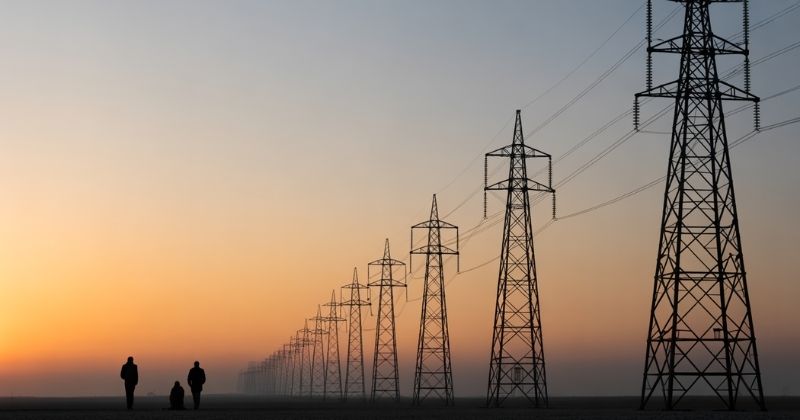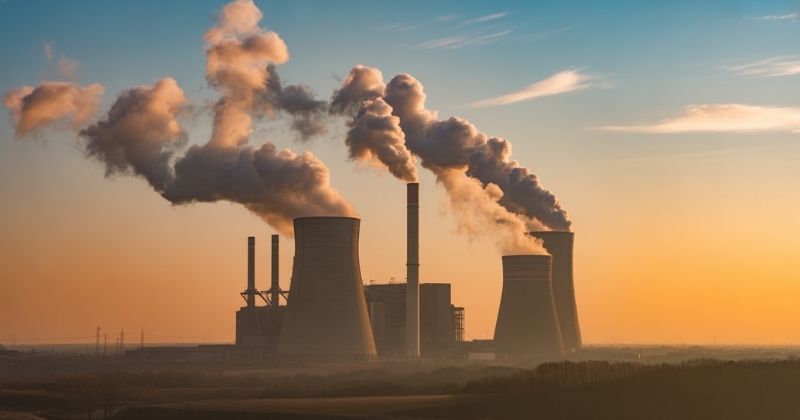
Eskom, once South Africa’s dominant electricity supplier, is facing a dramatic decline in demand as years of steep price hikes have driven customers to find alternative energy sources. Independent energy analyst Pieter Jordaan’s latest demand study paints a grim picture, revealing how a combination of soaring tariffs, tariff restructuring, and economic strain has pushed households away from Eskom’s grid. He examined how the power utility’s persistent increases have reshaped the national energy landscape, especially among low- and middle-income households, where affordability has become an increasing concern.
Key Takeaways
- Eskom’s pricing has become unsustainable: Years of aggressive tariff hikes and structural changes have driven both low- and middle-income households away, with electricity costs now consuming over 10% of some families’ monthly income.
- South Africans are moving toward energy independence: Consumers are turning to solar panels, gas, and off-grid systems as Eskom’s electricity becomes unaffordable, with residential demand declining by 5% per year since 2019.
- Government bailouts are masking a deeper crisis: Despite promises of single-digit increases, Eskom remains financially dependent on taxpayer-funded support, receiving over R78 billion in 2024 alone to stay afloat.
About Arcadia Finance
Secure your loan easily through Arcadia Finance. Compare offers from 19 trusted lenders, all registered with South Africa’s National Credit Regulator. Enjoy a smooth, fee-free process designed around your financial goals.
Rising Energy Burdens for South African Households
Jordaan’s analysis tracked the energy burden, the proportion of household income spent on electricity, across income brackets from 1996 to 2025. He classified any household spending more than 6% of its income on electricity as having a high burden, while spending above 10% was considered severe. He found that when this threshold is crossed, families begin to ration their electricity use or seek cheaper alternatives such as wood, paraffin, gas, or solar.
A growing number of South Africans are turning to small solar setups, battery banks, and prepaid meters to manage their budgets. In fact, small-scale solar installations surged by over 350% between 2022 and 2024.
His model included two typical household profiles: low-income households earning around R5,000 per month using 150 kWh monthly on Eskom’s HomeLight 20A tariff, and middle-income households earning R22,500 after tax and consuming 600 kWh per month on the HomePower 4 tariff. Using Eskom and Statistics South Africa data, he noted that up to 2008, low-income users faced only slightly higher burdens than their middle-income counterparts. However, following aggressive tariff reforms between 2008/9 and 2025/6, the situation reversed dramatically. By 2025/6, middle-income households carried a 340-basis-point heavier burden than low-income ones.
Trivia: Before 2008, electricity was so cheap in South Africa that it was among the world’s ten lowest-cost grids, but today it ranks among the most expensive in emerging markets.
By 2020, middle-income households’ energy burden had risen from 3.5% to 6.2%, officially crossing into the high-burden category. Further tariff restructuring in 2025/6 added substantial fixed charges, worsening the situation by 22% and pushing their burden to 10.9%, classed as severe. Jordaan cautioned that this pressure will only intensify, as Eskom’s latest tariff adjustments are being phased in gradually, with only a fifth of the change implemented this year. As the remainder is introduced in 2026/7 and 2027/8, middle-income households’ burden could soar to 14.7%.
Tip: Consumers facing severe electricity burdens should consider energy audits at home. Small steps like replacing geysers with solar heaters, switching to LED lighting, or using timers on appliances can shave hundreds off monthly bills.

Hollow Promises as Eskom’s Fortunes Decline
Energy Minister Kgosientsho Ramokgopa recently asserted that government had found a sustainable path forward for electricity pricing and that double-digit tariff increases were a thing of the past. However, Jordaan’s analysis suggests these reassurances have little substance. Eskom had already indicated, under its latest multiyear price determination (MYPD6) approved by Nersa, that its tariff increases would stabilise at single-digit levels, around 9% annually, even before any government announcement.
The MYPD (Multi-Year Price Determination) system is meant to bring predictability to tariffs, but critics say it’s become a mere rubber stamp for Eskom’s funding shortfalls.
The real challenge, however, lies not in controlling future hikes but in the damage already done. The analyst described Eskom as trapped in what he termed “demand quicksand,” where past overpricing has eroded consumer confidence and permanently reduced demand. Following two successive 30% tariff shocks in 2008/9 and 2009/10, compounded by the global financial crisis, national electricity consumption stagnated for half a decade. When Eskom attempted to revive demand by reducing tariffs by 10% in 2011, the recovery proved weak and short-lived. Although slight economic growth between 2014 and 2016 briefly revived consumption, load shedding soon curtailed it again.
As energy costs continued to climb, consumers increasingly adopted self-sufficiency measures, and Eskom’s residential demand began to collapse. Since 2019, usage has declined at a compound rate of 5% annually. By 2025, demand had only registered a negligible uptick of less than 0.1 GW, showing that recovery was far from complete. According to Jordaan’s data, the fall in demand since 2018 appears irreversible, driven largely by overpricing and eroding public trust.

Eskom’s Pricing Crisis
Jordaan concluded that Eskom’s financial and operational model has become unsustainable. Its inability to maintain efficiency, coupled with repeated price increases, has undermined its competitiveness and alienated its customer base. Even as government insists that the era of double-digit hikes is over, the reality remains that Eskom’s electricity is already unaffordable for many.
Since 2007, Eskom’s prices have surged by 937%, vastly outpacing cumulative inflation of just 155% over the same period. Jordaan calculated that the “fair maximum price” for the HomePower 4 tariff in 2025/6 should be R2.11 per kWh, based on a 5.6% energy burden benchmark from 2018. Yet, Eskom currently charges R4.11 per kWh, an overpricing of 95%. For low-income users, the fair price should stand at R1.57 per kWh, but they now pay R2.49, 58% higher than what is affordable.
Tip: Experts recommend that middle-income households consider joining community solar cooperatives or neighbourhood microgrids, as these can cut electricity costs by 40% and offer energy resilience during outages.
At these rates, Jordaan asserted that Eskom is unlikely to regain its customer base or restore sustainable demand. He argued that the company’s dependency on government bailouts has become entrenched, with the South African taxpayer effectively subsidising an inefficient monopoly. The utility’s escalating prices have not only damaged its financial viability but have also driven millions of South Africans towards energy independence, marking what may be the beginning of the end for Eskom’s dominance in the national energy sector.
In 2024 alone, Eskom received over R78 billion in government bailouts, equivalent to nearly R2,600 per South African taxpayer, a record figure that highlights the scale of the crisis.
Conclusion
Eskom’s long decline is now an unavoidable reality. Decades of mismanagement, soaring costs, and delayed reform have driven South Africans to take energy independence into their own hands. The country’s middle class, once Eskom’s financial backbone, is increasingly choosing solar and gas alternatives, leaving the utility caught in a spiral of falling demand and rising prices. Despite repeated government promises of stability, Eskom’s financial outlook remains dire, with massive bailouts masking structural collapse rather than solving it. Unless the utility drastically redefines its pricing, modernises its operations, and wins back public trust, it risks becoming irrelevant in a nation rapidly transitioning to decentralised, consumer-driven power.
Fast, uncomplicated, and trustworthy loan comparisons
At Arcadia Finance, you can compare loan offers from multiple lenders with no obligation and free of charge. Get a clear overview of your options and choose the best deal for you.
Fill out our form today to easily compare interest rates from 19 banks and find the right loan for you.



